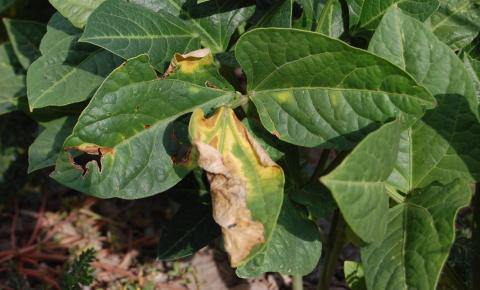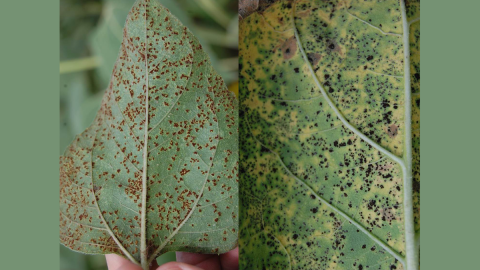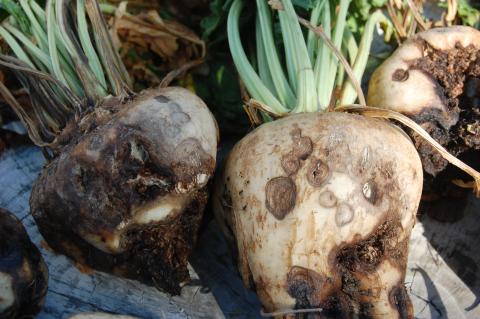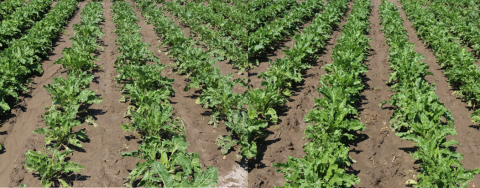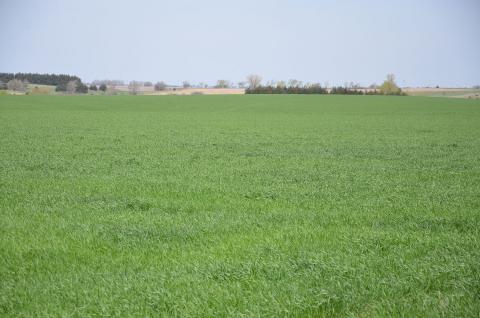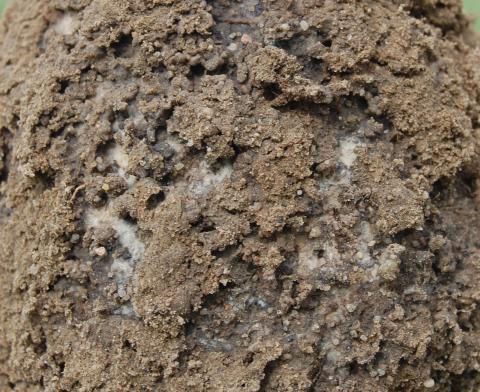Cowpea Bacterial Wilt ― An Old Disease in a New Crop
October 9, 2018
As growers in western Nebraska look at new pulse crops to integrate into their rotations, a UNL plant pathologist works to identify possible disease threats. Cowpea (black-eyed pea) is being studied now.
Specialty Crops Disease Update – 2018
January 8, 2018
Rainfall in spring and early summer 2017 was plentiful throughout western Nebraska, allowing good soil moisture for emerging crops, but also contributing to the development of plant diseases in multiple crops. This is an article from the Proceedings of the 2018 Nebraska Extension Crop Production Clinics.
Sunflower Rust May be Problematic in 2018 — Be Aware!
May 24, 2018
Unusually early findings of rust in volunteer sunflower in western Nebraska indicate the potential for a major outbreak much earlier than usual. Growers are encouraged to scout within the first few weeks of emergence and treat where necessary.
Dry Rot Canker – Obscure, but Returning Rhizoctonia Disease
May 23, 2018
Dry rot canker, one of several rhizoctonia diseaes of sugarbeet, has been relatively obscure since first being identified almost a century ago. New technologies, however, have helped to differentiate it from the more common Rhizoctonia root and crown rot disease.
When To Replant Sugarbeets: The Relationship Between Population, Yield, And Replant Timing
January 8, 2018
An article from the Proceedings of the 2018 Nebraska Extension Crop Production Clinics: Early season stand loss from wind or frost can be severe enough to require replanting of a sugarbeet crop. Three years of field trials at the Panhandle Research and Extension Center were conducted to determine just how much stands need to be reduced to justify replanting.
Fungicides are for Fungi
January 8, 2018
Symptoms of bacterial diseases can be easily confused with those of fungal diseases in field crops. This article, from the Proceedings of the 2018 Nebraska Extension Crop Production Clinics, reviews some of the common mistakes made in the major field crops and reviews research on the impact of fungicide use after hail events in corn and soybean.
It's Time to Scout for Wheat Diseases
April 19, 2018
With the predicted return to more normal temperatures, it's time to get into wheat fields and start scouting. Stripe rust has already been reported in southeastern Kansas and is expected to move northward. Included is a table of fungicide efficacy ratings for disease management in wheat.
The First Identified Root Pathogen: Rhizoctonia
April 12, 2018
This is the second article in a series on distinct sugar beet root rot diseases caused by the genus Rhizoctonia. This week Rhizoctonia solani and Rhizoctonia solani are featured.


